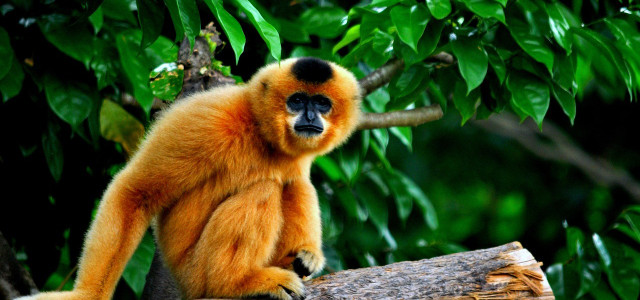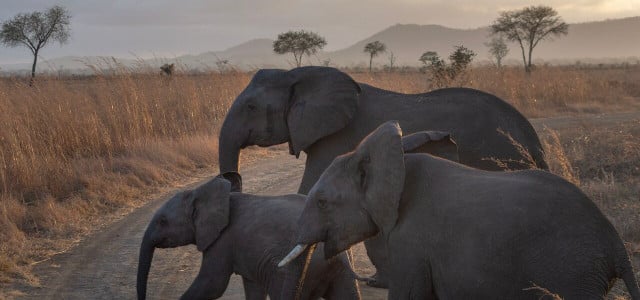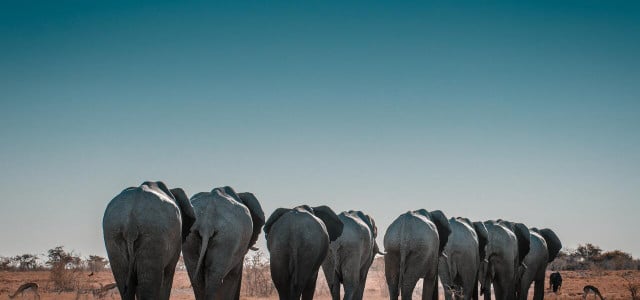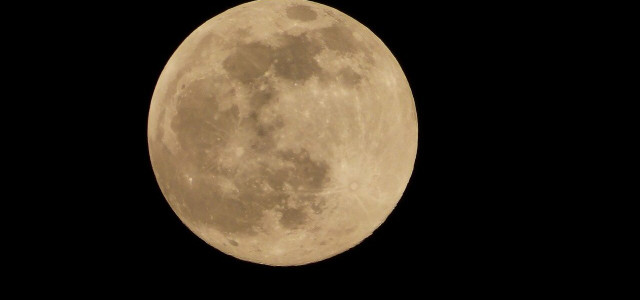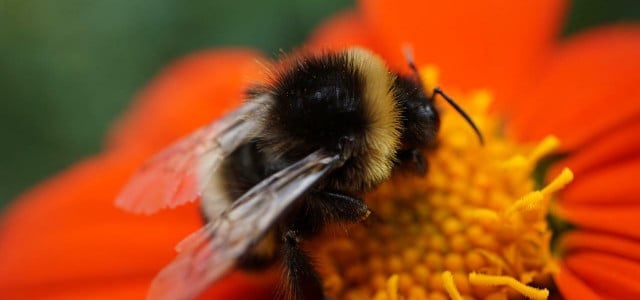The planet is full of unique species, but what animals live in rainforests? Read on to learn about some unique animals adapted specially for rainforest life.
The rainforests of the planet play several important roles in regulating climate. Sometimes referred to as the lungs of the planet, rainforests produce oxygen, store carbon, and regulate temperature and rainfall to prevent deserts from forming. Rainforests house the greatest biodiversity of plants and animals on earth, many being responsible for spices, cosmetics, or medications.
Today, tropical rainforest ecosystems are located in the tropics of Central and South America, Africa, Asia, Oceania, and the Pacific Islands. From its original range, only one-third of tropical rainforests remain, with the rest either degraded or completely gone. This habitat loss means that what animals live in the rainforests are becoming endangered species threatened by extinction. But what animals live in rainforests? Read on to learn about some common animals adapted uniquely to rainforest life.
1. What Animals Live in Rainforests? Bonobos
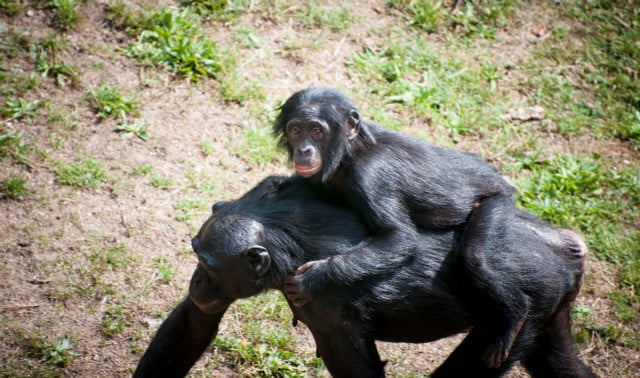
Along with its close relative, the chimpanzee, the bonobo is our closest living relative. Unlike chimpanzees, bonobos are smaller, significantly less aggressive, and more cooperative. These differences may be due to their different environments: chimpanzees live north of the Congo River and have more predators and competitors for food.
Bonobos meanwhile have a more abundant habitat and may have domesticated themselves into being more peaceful and cooperative as a result. This means bonobos offer a unique look at how humans evolved and how society shapes us even today.
2. Army Ants
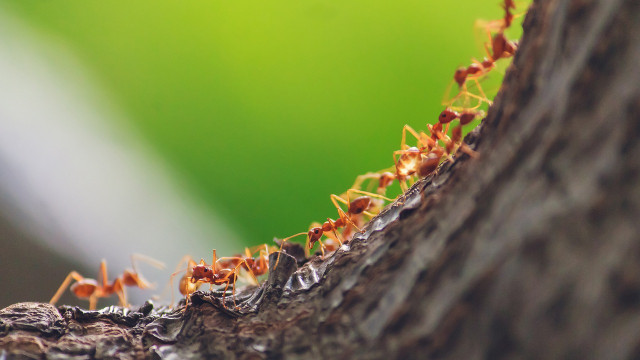


Among the more unique and terrifying rainforest animals are army ants. Despite their tiny size, army ants are known to overtake insects and small animals with their vast numbers. This is because, unlike other ants, army ants are nomadic: the entire colony roams around the forest floor devouring anything in its path.
Despite this seemingly destructive habit, army ants are essential to the health of the rainforest: they control insect populations, clean up dead carcasses, and even support larger predators by flushing out prey animals hiding in the underbrush.
3. Jaguars



Though often confused with its African relative, the leopard, the jaguar is native to the Americas. Also, while the leopard is smaller due to competing for prey with larger lions on the savanna, jaguars have little competition and are the largest predators in the Amazon.
Jaguars are also uniquely adapted to rainforest life: they are ambush predators, adept at climbing trees, and are among the only big cats who enjoy swimming. In fact, jaguars prefer environments near rivers or swamps where they can prey on caiman or turtles.
4. What Animals Live in Rainforests? Three-Toed Sloths
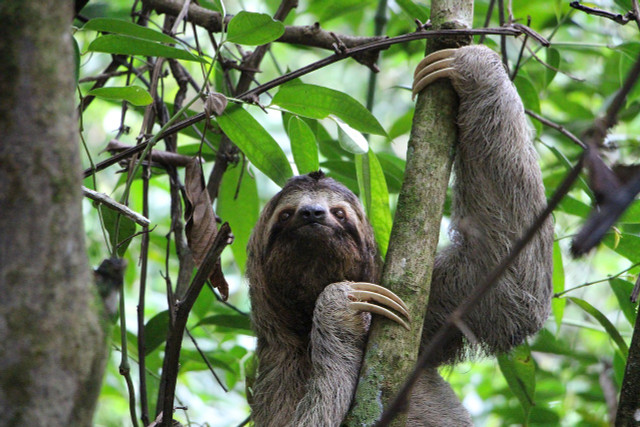


Known for its slowness, the aptly-named sloth has an incredibly slow metabolism to fit its diet of leaves. Living in Central and South America, sloths use very little energy and spend most of their lives hanging from tree branches. In fact, this stillness protects them: not only are sloths too slow for many predators to notice but their greenish fur hosts algae which camouflage the sloths among rainforest foliage.
5. Poison Dart Frogs



Among the most attractive and alarming rainforest animals are poison dart frogs. Native to South America, these amphibians are so named because indigenous Amazonians would use them to create poison darts. One species, the golden poison dart frog, is possibly the most poisonous creature on earth.
Despite this startling reputation, most species are only lethal if consumed, though they will often cause painful reactions if touched. Interestingly, poison dart frogs depend on a specific rainforest diet to produce their toxins: those raised in captivity are completely harmless.
6. Macaws
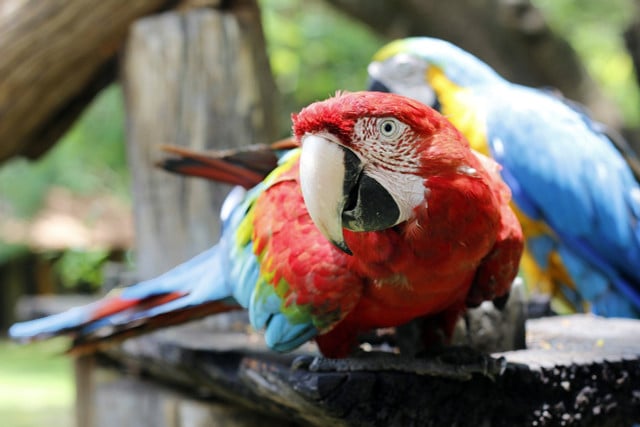


Macaws are so common in zoos and pet shops that we may forget they are rainforest residents, native to Central and South America. Their popularity isn’t new: macaws have been raised in captivity for hundreds of years for their vibrant plumage.
Today many species are threatened due to illegal poaching for the exotic pet trade. Macaws are essential to the rainforest habitat because they use their powerful beaks to eat fruits and nuts that other animals cannot.
7. What Animals Live in Rainforests? Chameleons



Chameleons are a family of iconic reptiles with several unique adaptations for the rainforests of Africa, Madagascar, and India. Their tong-like feet and prehensile tail help them hold onto tree branches, independently moving eyes allow them to scan for predators or focus on prey, and a long retractable tongue can shoot out to capture insects.
Despite common misconceptions, chameleons cannot actually change color to match their surroundings. Rather, some species are naturally camouflaged to match tree bark or foliage, while others can change hue or brightness to attract mates, warn competitors, or even regulate the amount of sunlight their skin can absorb.
8. Anacondas



Anacondas are the heaviest snakes on earth: adults average 16 feet long and 100 lbs, though the largest recorded snake measured over 30 feet and 550 pounds. Anacondas make their home in the Amazon rainforest, primarily in wetlands or slow-moving rivers.
Though they are known to eat deer and tapirs whole, anacondas don’t eat humans and prefer much smaller prey. Unlike more specialized hunters, anacondas eat any animal of any size they can overpower, meaning they are less vulnerable to starvation.
9. Capybaras



Native to the Amazon rainforest, capybaras are the largest rodents on earth. They are semiaquatic herbivores and excellent swimmers, meaning that they are at home on both the Amazon’s forest floor and its multiple rivers. Though they suffer from habit loss, capybaras are resilient and have also adapted to live in more developed areas alongside humans.
10. Flying Foxes
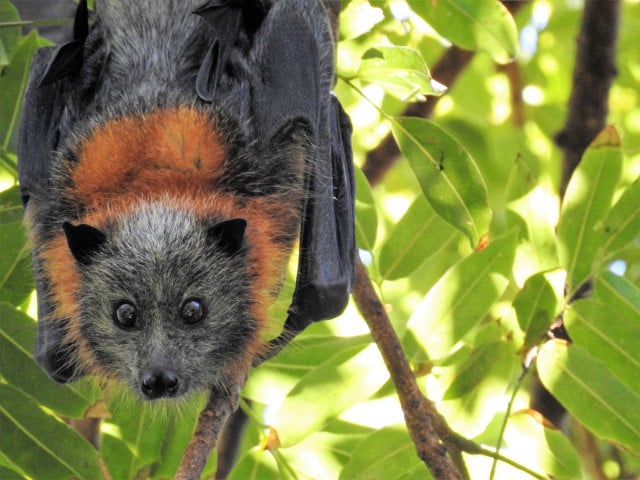


Flying foxes are the largest and most intelligent of bat species, occupying a vast range of rainforest habitats around the Indian and Pacific Oceans. Also known as fruit bats, flying foxes act as both pollinators (drinking nectar) and seed dispersers (eating fruit). Due to their high metabolism, flying foxes are able to disperse seeds over wide distances via flight, ensuring continued regeneration of the rainforest.
Also check out: The 15 Cutest Exotic Animals in the World
11. Cassowaries
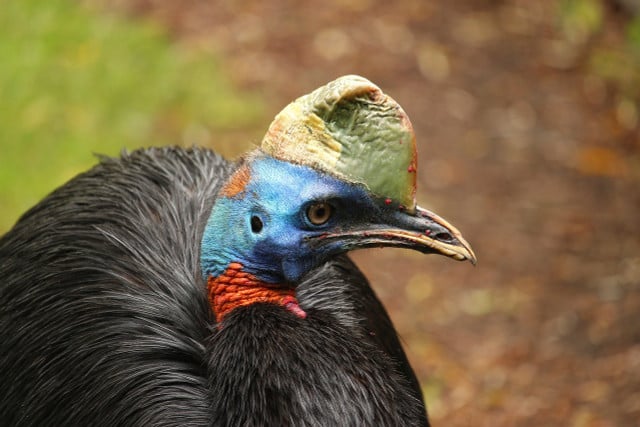


Native to the rainforests of Papua New Guinea and Australia, the cassowary is a keystone species in seed dispersal. Cassowaries are capable of eating fruits either too large or toxic for other animals and spreading the seeds via droppings. Because of their solitary nature, cassowaries will avoid one another by foraging over wide personal territories, ensuring that seeds are spread over wide distances.
12. What Animals Live in Rainforests? African Forest Elephants
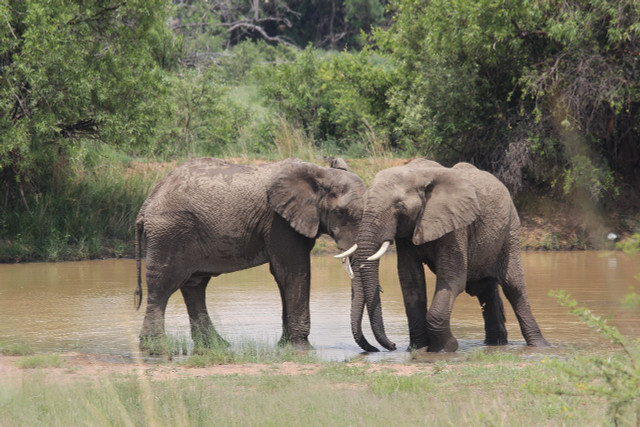


Unlike the better-known savanna elephants, forest elephants are a smaller species living in the rainforests of West Africa. Forest elephants are uniquely adapted to live in rainforests, where their diet consists of foliage and fruits.
In fact, forest elephants consume so many fruits that they act as the primary mode of seed dispersal (via their dung) within the forest. Many species of tree seeds germinate better after being eaten, meaning that the rainforest depends on these elephants.
13. Toucans
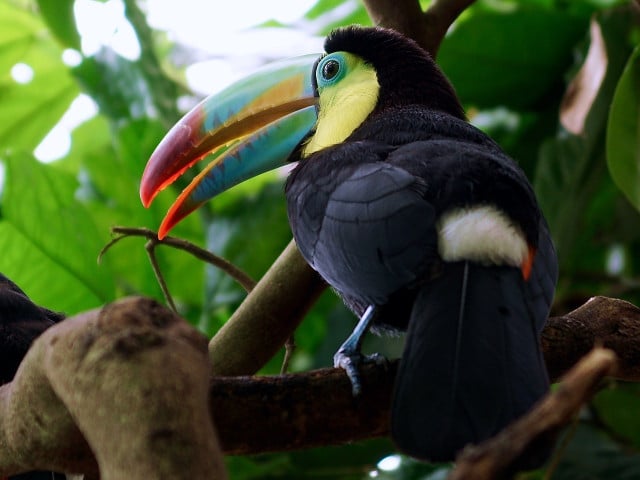


Toucans make their home in the Amazon and have the largest beak-to-body ratio of any bird on earth. Despite this large size, a toucan’s beak is not as powerful or as sharp as a parrot’s. This means that toucans feed primarily on softer fruits (whose seeds they then spread via droppings) or small animals. Toucans also use their large beaks to regulate body temperature (like a rabbit’s ears) and keep cool in the hot rainforest environment.
14. Okapi



Okapis are herbivores that live in the Congo rainforest and subsist on understory (ground level) foliage. They are generalist eaters, using their long tongues to pick out a wide variety of leaves. Their distinctive, zebra-like rear helps keep them camouflaged from leopards, their primary predator.
Learn more about endangered species on Earth:
- Are Praying Mantises Endangered? No—But People Think They Are
- Why Are Tigers Endangered? The 4 Major Threats
- Are Honeybees Endangered? How to Help the Honeybee
- Why the Mexican Gray Wolf is Endangered and How You Can Help
- Why Are Red Pandas Endangered & How Can We Help?
- Are Narwhals Extinct or Endangered? How Can You Help?
- Are Bears Endangered? These 3 Species Are
- Are Sea Lions Endangered? Threats & What You Can Do
- Endangered Trees: 10 At-Risk Species
- The 15 Most Endangered Animals in America
Read more:
- What Does “Endangered” Mean? A Closer Look
- 6 Solutions to Deforestation and What You Can Do
- Terra Preta: What’s So Special About Amazonian Dark Earths?
Do you like this post?






